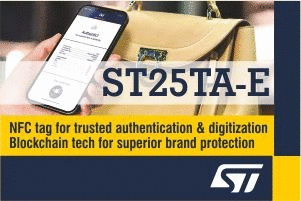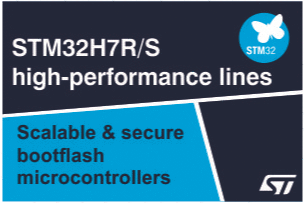The latest trend of Configurable Technology is for achieving faster time to market and cost effective solutions. At the same time the features and performance of system is not sacrificed. This paper provides insight to Challenges for Software IP Provider and Tata Elxsi’s design approach to overcome Challenges posed by variety of Multimedia embedded system requirement.
The conventional Multimedia Market segment is having solutions based on Hardware and Software Co-Design. Embedded Hardware and Software Co- Design is like two fish eating other’s tail
and each one inter-dependent on the other. The change in hardware technology is fast tracked and needs to be supported by software solutions, which need to be flexible, easy to port, scalable, and also needs to be implemented in effective timeline to have advantage of time to market. The present design Scenarios is based on SoC, DSP, FPGA and ASIC based architectures.
The Media Player Framework and its features help Silicon Providers, OEMs and ODMs to have solution available on their platform.
The framework is evolved over last decade and is proven with number of implementations. This paper also proposes design of Modular H264
Software IP.
Trends In Hardware Solutions
The present Media segment is evolving with respect to features, applications and most importantly on the hardware solution. With the invention of configurable hardware solutions it provides more flexibility in terms of design, performance and cost for the given silicon area.
The conventional media solutions are generally based on various hardware platforms such as:
• DSP
• SoC
• DSP + RISC core
• FPGA
• ASIC
Typically almost all the architectures in recent years are designed for relatively narrow application segment and hence are generally not cost effective. They also lack in providing the scalability and flexibility.
The change in processor technology is still not sufficient to cater the media segment market, because the algorithms and protocols are becoming more complex and varied in their applications. With the complexity increasing exponentially, it is desired to have hardware solutions much smaller in terms of gates, more power efficient with rich features and still needs to deliver the performance demanded by high end multimedia applications.
The latest trend in this segment is to have Configurable Processors, re-usable arrays and creating custom instruction set as demanded by the application. These architectures try to explore the data parallelism and hence try to archive the performance by processing the bulk amount of data.
Typically new technologies, which are in this segment, are solutions from Tensilica*, Stretch*, IPFlex*, PACT XPP* etc, which are trying to address the above-mentioned issues.
Software Design Challenges
Today’s Consumer Electronic (CE) or Digital Market (DM) is driven by convergence of applications in the category of Home entertainment, Portable devices and Mobile devices. These CE devices are becoming more and more complex, networked, and interconnected. This feature rich convergence of technologies increases the product complexity. The CE and DM market segment is also driven by the factors as differentiators:
• Innovative Designs
• Convergence of applications
• Interconnectivity of different devices
The manufacturer still wants to
• Reduce the time to market
• Reduce the cost of production
• Increase productivity
• Reduce maintainability
• Have a future Scalable Solution
< h3>Challenges For Software Solution Provider
The challenges of Software IP provider can be categorized at different life cycle stages of development like design, integration, testing and porting challenges.
Possible Solutions
It is very difficult to address all the issues and come up with the unique architecture, which will cater the entire problem set.
These problems can be handled by following certain rules and methodologies
• Standardized Interfaces
• Modular design
• Abstraction at Different stages
• Configurable Software Stack
•Flexible Task handling and inter process communication
• Scalable Architecture for variety of hardware solution ranging from conventional Cores to Configurable Multiprocessor solutions.
• Maximum re-usable components.
• Pre and In Design Defect Prevention
Open source stacks are available for different applications and they try to address the above challenges. The possible constrains of such solutions are
• Applications are bulky
• They are not modular
• Available generally for desktop applications
• Maintenance and enhancement is difficult
Tata Elxsi Solution
Tata Elxsi has developed a unique “Media Player Framework”, which is flexible, scalable, thin, easy to maintain and portable across different platforms. The framework implemented by Tata Elxsi is ported successfully for different applications like
• DVD Player
• Portable Media Player
• Broadcast Media Player
The framework is easy to adopt for any application in the segment of Digital Media.
Description
The Framework diagram shown above is the generalized layer stack designed, developed by Tata Elxsi.
The components shown in diagram are highly modular and can be reused with negligible / minimum changes specific to given new standard.
Optimal Media Player Framework:
The Media Player Framework has following salient features
• Object Oriented and Modular Design
• Well defined interfaces
• Standardized error handling mechanism with error classified as Minor, Major and Critical
• Callback function implementation for response messages
• Loosely coupled Architecture
• Enabling condition compilation for achieving minimum footprint
We have proved that this generalized framework in not having overhead in the performance but on the contrary helps in effective development of the solution in lesser duration.
A good design ensures considerable reduction in the testing and debugging time in the complete development. In Tata Elxsi we believe in design focused development and integration of software and firmware.
Compared with the Open source implementation, Tata Elxsi has developed number of reusable components, which are important part of Media Player Framework.
The broadcast media player supports following features
• DVB- H playback
• AV Playback
• H264 / MPEG 4 / HE AAC / MP3 Decoder
• MPEG 4 recording
• JPEG Slide show
• Playlist management
• Supports common file formats
Case Studies: Codec
The High definition implementation along with the complexity of H264 Standard makes it very difficult to implement on conventional hardware platforms. The main challenge in hardware implementation is to break the sequential implementation to modular design.
The Software IP of H264 Encoder of Tata elxsi is designed considering
• Modular Architecture
• Frame / Macro block level implementation as per the need of application
• Clean interfaces.
• Algorithms which are easy to modify and port
• Fixed point implementation.
• Rate control scalable to Frame and MB level.
This kind of implementation is already available on differnet hardware solutions as
• General Purpose Processors
• Configurable Processors
Conclusion
Tata Elxsi has rich set of AV Codec and Media solutions which are designed keeping in view the dynamically changing design of hardware platforms.
The modular design approach is applied for Software IP like AV Codecs to the complete Media Player Framework. This gives advantage of faster time to market and easily scalable solution.
• All names used are property of their respective company






